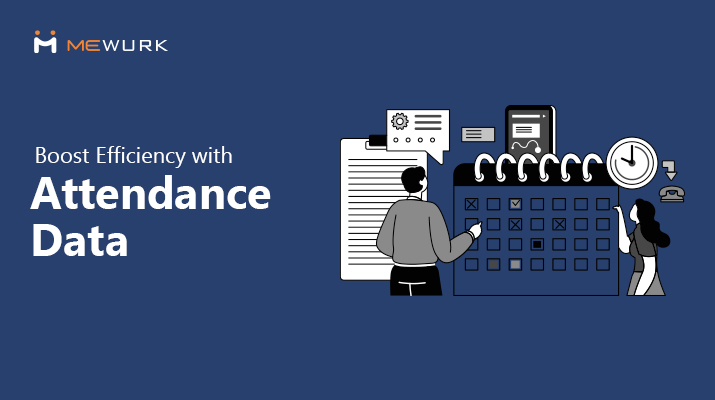
Weighing the Benefits and Limitations: On Premise HR Software Vs Cloud HR Software
Can you believe that in 2024, there was a time when people had to go to the office and mark their attendance on a paper register? Similarly, taking breaks required checking in and out on another register.
While these systems were common until recently, we now heavily rely on modern on-premise or cloud-based workforce management systems. We've grown so accustomed to these new ways that we prefer not to remember the old methods. Just like we prefer streaming music on Spotify or YouTube rather than from a memory card, organizations increasingly favour cloud-based attendance systems over on-premise ones. This blog provides a detailed comparison of cloud-based vs on-premise workforce management systems. It covers:
- Definitiations of on-premise and cloud based human resources software
- Pros and cons of both
- A comparison from a practical point of view.
So, buckle up for an informative ride.
What Is A Cloud-Based Workforce Management System – Definition And Highlights
Cloud-based workforce management solutions harness the potential of cloud computing technology to offer customers on-demand access to essential HR resources. This means businesses can enjoy these services directly without the hassle of installing and managing independent workforce management systems in their offices. By default, cloud labor management systems come equipped with storage and processing power.
This eliminates the need for additional investments in infrastructure or licenses. Through a subscription model, users pay an annual fee for access to service features.
The cloud provider takes care of servers, networks, software, and round-the-clock maintenance. On top of that, customers gain exclusive access to the platform from their cloud service providers.
They have the flexibility to customize the platform to meet their unique organizational needs. For instance, setting backup frequencies, defining access controls for the HR team and employees etc. With options for custom backup controls and upgrades, cloud-based workforce optimisation solutions offer businesses the flexibility and scalability they need to thrive.
What is On-Premise Workforce Management System – Definition and Highlights
An on-premise workforce management system is an in-house software solution deployed by an organization to manage its workforce. The system is designed and developed by an external provider.
The organization buys it and installs it on the company's computer storage and makes it available across its HR team and employees as per their functionality requirements. Unlike cloud based HR software, on-premise systems allow the entire management of the system - data management and storage, access controls, etc., from within the organization's premises.
This independence of server and storage without relying on a third-party server makes customization, security enhancement, etc., a bit easier. However, it comes with the challenge of self-maintenance. In case of any security breaches or glitches, the organisations have to do the maintenance either by themselves or by integrating the support of an expert IT professional.
Pros and Cons of Cloud-Based Workforce Management Systems
As with anything else, SaaS or Cloud-based workforce management systems have both pros and cons. Let's examine them more closely.
Pros
No technical expertise required:
Cloud WFM software systems use separate computing, storage, and networking functions away from the client’s physical hardware and thus reduce the need for in-house experts to handle the technical management.
Easy Accessibility:
Accessing functionalities with cloud-based software workforce management is easy. All you need is an internet-enabled computer or smartphone. It effectively eliminates the need for complicated software installations.
Automatic Software Updates:
With cloud labour management system software, you can enjoy hassle-free operations without concerns about technical glitches or system maintenance. The service provider manages everything in the background without causing any service interruptions.
Requires Less Storage:
Cloud based hr management software does not depend on clients' IT resources for data storage. Thus, organizations can effectively prioritize their system resources for critical organizational requirements.
Affordable for Startups:
Organizations can begin using HR software in the cloud after paying a subscription fee calculated based on the employee headcount. This makes it a more economical option for startups with limited budgets.
Enables Seamless Scalability:
With cloud based HR software, businesses can effortlessly adjust their workforce size without concern. The subscription-based service offers flexible options to add or remove users and ensures that charges are calculated based on the actual usage.
Cons
Increased reliance on the provider:
Cloud-based workforce optimisation solutions may compromise your autonomy on employee management and leave you at the mercy of service providers. When system downtimes happen, it can affect your operations until issues are resolved.
Newer features and newer challenges:
SaaS providers are competing to integrate new features into their product modules. Even if those new features might help businesses, getting started with them can pose a challenge to the HR team at the implementation phase.
Demands system upgrade:
Companies using outdated computer systems or lacking reliable internet access may encounter significant hurdles in implementing cloud-based workforce management tools for their employee management.
Lack of flexibility:
While human capital management cloud solutions may tout flexibility, the extent of it is often questioned due to their one-size-fits-all design for various types of organizations.
Impacts on budgeting:
While cloud services operate on a pay-as-you-go model, some features included in standard plans may be irrelevant to your organization's needs. Consequently, investing in such features could result in unnecessary expenditure.
Pros And Cons Of On Premise Hr Software
Now, let’s explore the key benefits and limitations of on premise labour management systems:
Pros:
Enhanced control:
With on-premise WFM tools, you will have better control over the software’s customization as per your organizational needs. You will also be able to tweak its security level and access control in alignment with your business’s policies.
Flexibility with upgrade:
On-premise workforce optimisation systems give you enhanced flexibility with when to initiate software upgrades. It means you can schedule it according to your time preferences without causing any downtime in the operations.
Statutory compliance:
Organizations operating in most countries are to ensure statutory complaints with specific data protection acts. For instance, GDPR in the EU. On-premise labour management systems offer better compliance with such regulations.
Integration with other systems:
Organizations that use on-premise systems for other major tasks like finance management or customer relationship management (CRM) etc., would find an on-premise management of workforce solution better due to smooth integration capabilities.
Cost-efficiency in the long-term:
Despite incurring significant upfront costs, purchasing an on-premise system can ultimately prove to be cost-effective in the long run, as organizations are not required to invest in recurring subscriptions periodically.
Cons:
Limited Accessibility:
With on-premise HR systems, the big compromise comes in the form of limited accessibility. You will only be able to access them while within the office network and mobile workforce management is never a choice. It means you will have to find other solutions for your remote teams and field employees working from different locations.
Low scalability:
As a business, your foremost objective is growth. As you expand, you require a scalable workforce management system capable of accommodating increased teams, departments, and employees. With on-premise WFM systems, continual scaling of your business necessitates ongoing investments in additional hardware, network infrastructure, and other resources.
Huge upfront cost:
The upfront costs associated with on-premise workforce management systems, including hardware procurement, installation, implementation, and training, are huge which many startups find daunting. This upfront expenditure remains disproportionate regardless of the business's size.
Frequent maintenance requirements:
Maintenance is an ongoing routine with on-premise workforce management software. Most of the time, it will require a dedicated team of IT professionals to keep these systems running smoothly. This can even divert the focus of your IT team from their most important tasks.
Final Verdict
In conclusion, deciding between an on-premise or cloud-based workforce management system should be based on weighing the pros and cons of each and how well your business can adapt to them.
The business landscape is evolving, with many embracing modern HR systems. Cloud is now the norm, and investing in a system aligned with scalability goals is crucial. Furthermore, on-premise systems lack support and innovation opportunities.
The Mewurk Promise
Mewurk has made significant strides in the realm of cloud based workforce management solutions. With over five years of dedicated industry research and swift integration of the latest innovations in cloud, automation, and IT, it offers a promising future for businesses in workforce management. Schedule a free demo today
Most Popular Post

Why Accurate Attendance and Leave Management Matters for Business Growth?
Read More →Why Accurate Attendance and Leave Management Matters for Business Growth?
How To Leverage Attendance Data For Better Workforce Management?
Read More →How To Leverage Attendance Data For Better Workforce Management?




